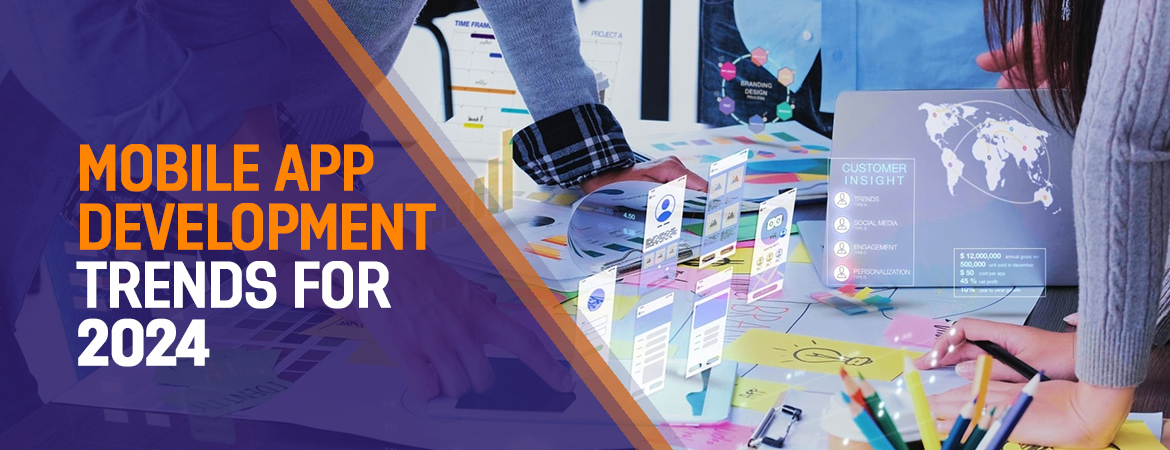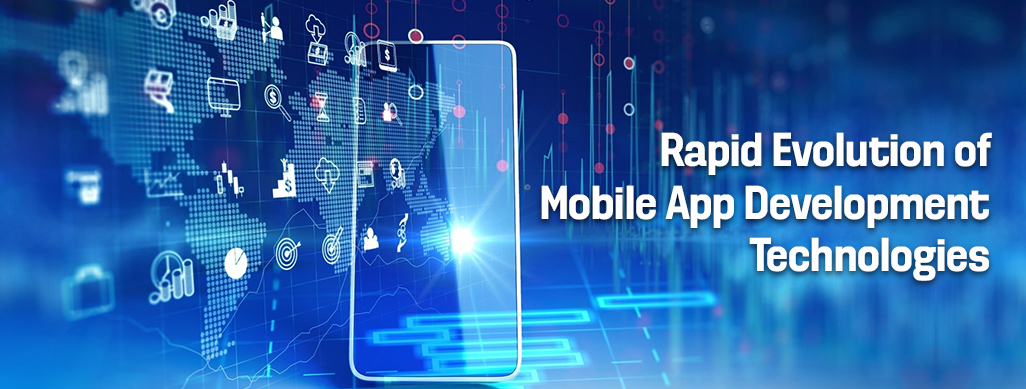
We use cookies to ensure that we give you the best experience on our website.
By using this site, you agree to our use of cookies. Find out more.
This blog covers some of the major trends in mobile app development that will shape the future of app development in the upcoming year. It explores how innovations in areas such as Internet of Things, 5G networks, artificial intelligence and many other domains will influence how mobile apps are created to provide enhanced user experiences.

The landscape of mobile app development is continually evolving to keep up with emerging technologies and changing consumer behavior. As we enter 2024, mobile app developers will need to focus on new trends that are likely to impact mobile app design and development. This blog covers some of the major trends in Top Mobile Application Development that will shape the future of app development in the upcoming year. It explores how innovations in areas such as Internet of Things, 5G networks, artificial intelligence and many other domains will influence how mobile apps are created to provide enhanced user experiences.

Mobile app development saw the rise of frameworks like Flutter and React Native that allow building native apps using a single codebase. This has helped streamline development processes. Technologies like SwiftUI and Jetpack Compose make it easier than ever to create intuitive user interfaces. Cloud-based no-code/low-code tools are also gaining popularity as they allow even non-programmers to build basic mobile apps. At the same time, advanced technologies like AR/VR and machine learning are finding their ways into apps through SDKs and APIs. With so many new technologies, 2024 will see continued rapid changes in how mobile apps are developed and delivered to users.
The field of Best Mobile App Development is evolving at a startling pace. New and improved technologies are facilitating faster development cycles. This allows businesses to update their apps more frequently in response to changing market needs and user behaviors. The following section focuses on how technologies used for building mobile apps have rapidly advanced in recent years.
With more IoT devices getting added to household appliances and products, the need for app integration will rise exponentially. Developers will have to focus on building apps that can seamlessly connect various IoT gadgets and control/monitor them from a single mobile interface. Technologies like WiFi, Bluetooth and NFC will be leveraged to integrate apps with smart home devices like security cameras, locks, lights, thermostats as well as healthcare monitors, sensors and industrial equipment.
The apps of 2024 will act as controllers allowing users to quickly access feeds from security cameras, check electricity or water usage, remotely manage appliances and get alerts. Integration with voice assistants like Alexa and Google Assistant will also become common to enable hands-free commands. Standardization of connectivity protocols will accelerate the widespread adoption of IoT-compatible apps across multiple industries.
With new foldable phones becoming increasingly popular, mobile app developers need to start optimizing their apps for foldable form factors. Apps will have to dynamically adapt to different screen sizes depending on whether the device is folded or unfolded. Developers must ensure seamless transition between various modes with consistent user interface flows. Special care needs to be taken for foldable apps to handle multitasking with two or more apps simultaneously running across both screens.
Features like app continuity become important to transfer work smoothly between postures. Multitasking APIs and flexible UI components offered by various mobile platforms will assist app makers to design foldable-ready solutions. Enhancing media consumption with multi-view experiences and enabling smoother sleeves for content to be visible across panels are some other focus areas.
With 5G becoming widely available across regions, developers will explore how they can take advantage of the superior network speeds and lower latency offered by 5G. Real-time communications and collaborations can be greatly improved using 5G features like network slicing for prioritization. Immersive applications involving augmented and virtual reality will benefit from 5G which allows downloading huge asset files faster and improving responsiveness.
Live streaming of high-quality video and multiplayer mobile gaming will create better engagement. 5G also enables functionality like multi-access edge computing facilitating real-time analytics of IoT data. Apps may integrated localized edge servers for instantaneous cloud processing without much dependence on centralized data centers. Authentication through 5G will open up opportunities for seamless sign-ins across devices on unified digital identities.
The market for wearable devices like smartwatches and fitness bands is growing rapidly. App developers will have to tailor their designs specifically for these compact wearable screens with limitations on size and battery life. Simple and light apps focused on delivering key information through always-on notifications will work best rather than fully-fledged mobile experiences.
Emphasis will be on providing quick access to contextually relevant data like fitness metrics, messages and payments on the go. Gesture and voice controls will become more integral for wearables owing to the smaller interfaces. Ensuring seamless handovers between paired phones and optimizing performance for continuous body sensor monitoring will be priorities. Interoperability between wearables and other IoT devices will expand application possibilities as well. Developers also need to prioritize user privacy and information security for apps handling sensitive biometric data.
Artificial Intelligence will continue to be a major area of focus for app developers in 2024. AI capabilities can enable powerful personalization, recommendation systems and predictive analytics within apps. Machine learning algorithms trained on user behavior and preferences can suggest highly relevant content and automated customer service through chatbots will improve user experience. Computer vision skills through the camera can enable visual search, image recognition, and more immersive AR overlays.
AI assistants within apps will be more responsive to voice, touch and gesture-based queries. Developers need to closely evaluate how AI models are developed, optimize their accuracy over time, and ensure user privacy and security is not compromised. Standardization of AI software development kits will allow easier integrations for diverse mobile apps across industries.
Mobile apps in 2024 will continue embracing new technologies in Mobile App Development to become smarter, more personalized and offer seamless connectivity. Whether it is leveraging IoT for smarter homes, AI for powering recommendations, foldable screens for flexible form factors or 5G for interactive experiences - mobile app developers will integrate emerging capabilities within their apps. Ensuring a balanced focus on enhancing both functionality and user privacy will be important for mobile app development. Adapting to changes thoughtfully while strictly adhering to best practices in mobile app development can help mobile apps deliver enriched experiences for all. It will be exciting to witness how the trends discussed in this blog further impact mobile app development over the coming year.
Leave a Comment
Your email address will not be published.